Family Buddlejaceae Rank Species | Genus Buddleja Higher classification Butterfly bush | |
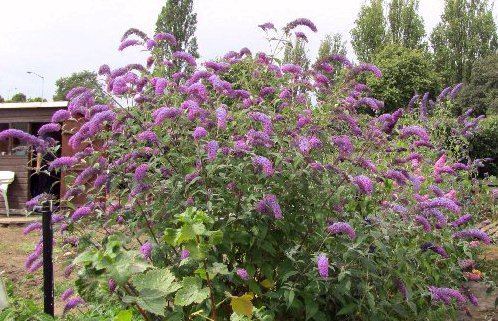 | ||
Lower classifications Buddleja davidii 'White Pr, Buddleja davidii 'Black Kni, Buddleja davidii 'Monum, Buddleja davidii 'Empire B | ||
rbol de las mariposas buddleja davidii arboles y arbustos
Buddleja davidii (spelling variant Buddleia davidii), also called summer lilac, butterfly-bush, or orange eye, is a species of flowering plant in the family Scrophulariaceae, native to Sichuan and Hubei provinces in central China, and also Japan. It is widely used as an ornamental plant, and many named varieties are in cultivation. B. davidii is named for the Basque missionary and explorer in China, Father Armand David, who was the first European to report the shrub. It was found near Ichang by Dr Augustine Henry about 1887 and sent to St Petersburg. Another botanist-missionary in China, Jean-André Soulié, sent seed to the French nursery Vilmorin, and B. davidii entered commerce in the 1890s.
Contents
- rbol de las mariposas buddleja davidii arboles y arbustos
- Buddelia buddleja davidii www riomoros com
- Description
- Buddleja davidii after Leeuwenberg
- Cultivation
- Invasive species
- References

B. davidii was accorded the RHS Award of Merit (AM) in 1898, and the Award of Garden Merit (AGM) in 1941.
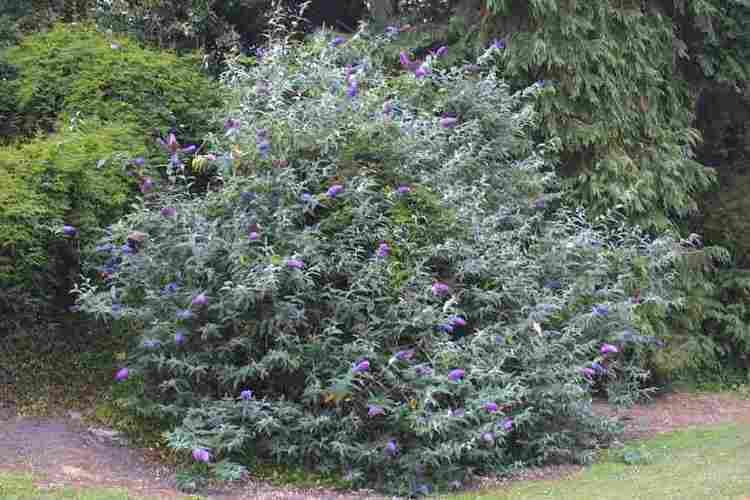
Buddelia buddleja davidii www riomoros com
Description

B. davidii is a vigorous shrub with an arching habit, growing to 5 m (16 ft) in height. The pale brown bark becomes deeply fissured with age. The branches are quadrangular in section, the younger shoots covered in a dense indumentum. The opposite lanceolate leaves are 7–13 cm long, tomentose beneath when young. The honey-scented lilac to purple inflorescences are terminal panicles, < 20 cm long. Flowers are perfect (having both male and female parts), hence are hermaphrodite rather than monoecious (separate male and female flowers on the same plant) as is often incorrectly stated. Ploidy 2n = 76 (tetraploid).
Buddleja davidii, after Leeuwenberg
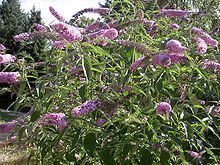
In his 1979 revision of the taxonomy of the African and Asiatic species of Buddleja, the Dutch botanist Anthonius Leeuwenberg sank the six varieties of the species as synonyms of the type, considering them to be within the natural variation of a species, and unworthy of varietal recognition. It was Leeuwenberg's taxonomy which was adopted in the Flora of China published in 1996. However, as the distinctions of the former varieties are still widely recognized in horticulture, they are treated separately here:
Cultivation
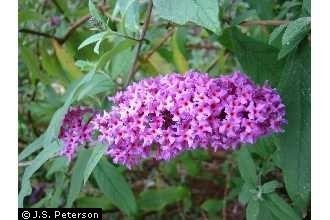
Buddleja davidii cultivars are much appreciated worldwide as ornamentals and for the value of their flowers as a nectar source for many species of butterfly, though the species and cultivars are not able to survive the harsh winters of northern or montane climates, being killed by temperatures below about −15 to −20 °C (5 to −4 °F).
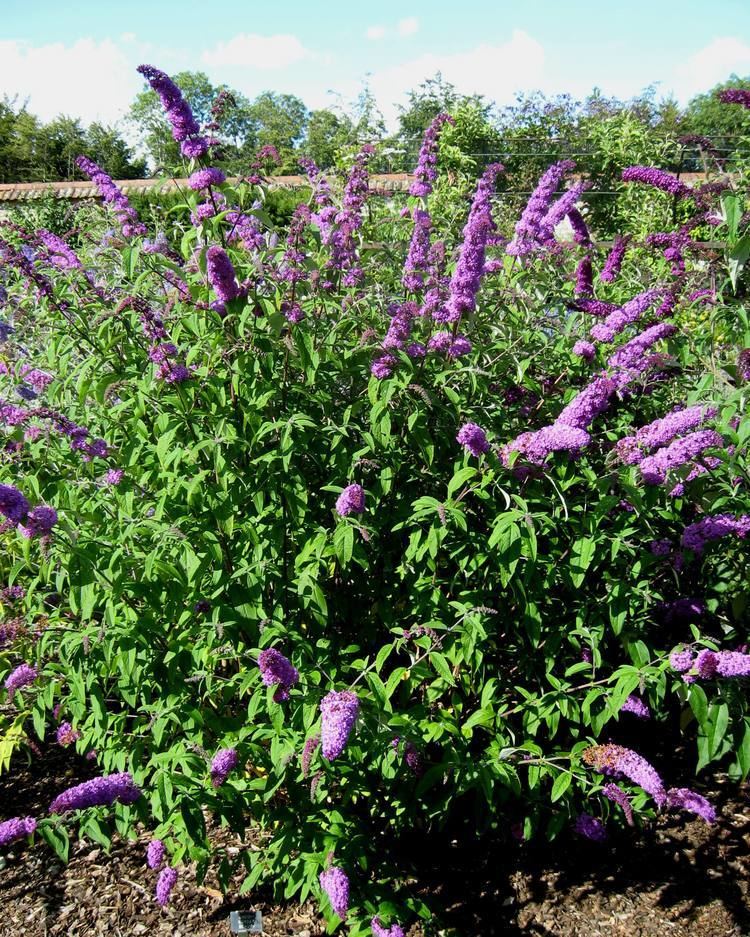
Younger wood is more floriferous, so even if frosts do not kill the previous year's growth, the shrub is usually hard-pruned in spring once frosts have finished, to encourage new growth. The removal of spent flower panicles may be undertaken to reduce the nuisance of self-seeding and encourage further flower production; this extends the flowering season which is otherwise limited to about 6 weeks, although the flowers of the second and third flushes are invariably smaller.
Hardiness: USDA zones 5–9.
There are approximately 180 davidii cultivars as well as numerous hybrids with B. globosa and B. fallowiana grown in gardens. Many of these cultivars are of a dwarf habit growing to no more than 1.5 metres (4.9 ft). The following davidii cultivars held the RHS Award of Garden Merit in 2012:-
Invasive species
Buddleja davidii has been classified as an invasive species in many countries in temperate regions, including the United Kingdom and New Zealand. It is naturalized in Australia and in most cities of central and southern Europe, where it can spread on open lands and in gardens.
Within the United States, it is widely established as an escape from cultivation, and classified as a noxious weed by the states of Oregon and Washington.
